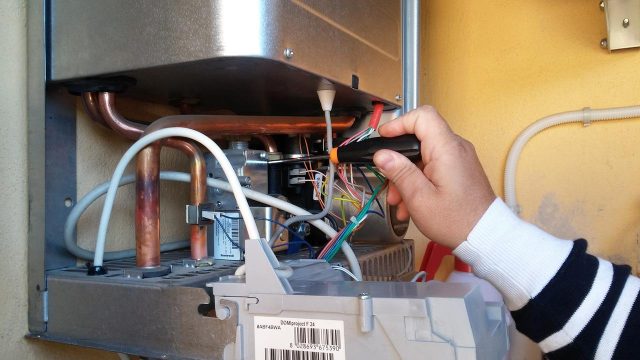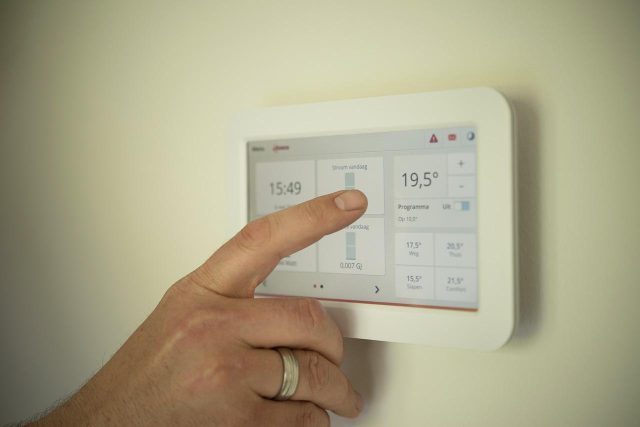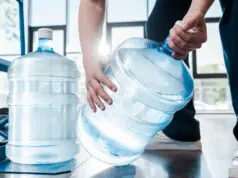
As the temperatures outside begin to drop, we begin to ensure that the inside of our home is ready for the winter. Of course, you should be getting a water heater repair service from professionals to ensure you have enough hot water (visit this website), but you also want to make sure the air in your home is warm, too. If not, you could be in for an uncomfortable and miserable couple of months.
It is largely your furnace that is responsible for keeping your home warm all winter long. While it would be great if your furnace always worked without any issues or problems, this isn’t always the case. Furnaces can go through many different issues that can limit how effective they are, or even stop them from working altogether.
In an effort to help you out, this article is going to go over some of the most common furnace-related issues you may run into, and how to deal with them.
Your Furnace isn’t Pumping Out Adequate Heated Air

One of the most common furnace issues of them all is that it is struggling to pump out warm air throughout the home. The air it pumps out might be relatively cool, or it simply might not have the power that it once did. There are a couple of different things you can check and do if you feel as if your furnace isn’t producing enough heat.
One of the first things to check is your air filter. If your filter is clogged up and dirty, it can restrict airflow and limit how much air can be pushed through your system. Another thing is to check the ducts. If your ducts are full of debris, or have holes or gaps in them, it could be restricting the flow of air, or letting air escape the ducts before reaching its final destination.
Make sure to check out the various vents in your home to ensure they are clear, too. If you are keeping furniture over your vents it could be blocking a lot of the warm air that should be entering a room.
If your furnace is producing no heat at all, you should make sure it is turned on, and if it is, go and make sure that the fuse or breaker was tripped. There could also be a problem with the wiring at some point in the circuit, or the furnace might simply not be in working condition any longer if it is damaged or very old. However, you can always reach out to professionals like the ones from Smile HVAC that can fix your problem.
Your Furnace is Making Loud and Jarring Noises

While furnaces aren’t completely silent most of the time, there will be some noises your furnace makes that could be the sign of a problem materializing behind the scenes. This could be squealing, screeching, banging, or rattling.
You should know what the normal sounds are that your furnace makes, and if it begins to make other sounds, you should turn the system off and inspect it. Look for any loose or worn out parts, check the wiring, inspect the ducts, and consider calling in an expert if you can’t identify the problem. The exact problem you face will depend on the noise you hear, as well as the quality of your ducts, the efficiency of your system, and which system you have in general.
Your Furnace is Short-Cycling
A short-cycling furnace is another problem that many homeowners will run into from time to time. This is when the furnace turns off and on very rapidly, without the temperature of the home reaching what you desire.
A system should be turning off and on multiple times an hour to keep the temperature consistent, but if it does this several times in only a couple minutes, it could be the sign of a problem. Not only is it annoying and your home never quite reaches the temperature you want, but it can also be incredibly wasteful.
If you experience your furnace turning off and on very quickly, you want to turn off the system and go change the filter. Oftentimes, a clogged and dirty filter can be behind this issue. It can also be the limit control switch, the motor, the belts, or overheating within the furnace. If the filter was the problem, that is easy to replace yourself, but if not, you may want to call in a professional.
Your Furnace Controls are Not Working

When you want to change the temperature in your home, or turn your system off or on, you do so at the thermostat or control panel for your system. Unfortunately, another common issue is that the controls for your furnace are not working as they should.
The first thing to do is make sure that the thermostat is set to the right temperature and is in the right mode. If it is, and the issues persist, you want to consider replacing the batteries. If the new batteries don’t fix things, you may need to reset the thermostat, and then consider checking the wiring if you are still experiencing a problem with controlling your system.
Your Burners or Electric Ignition are Not Working
Depending on the type of furnace you have and how old it is, it will either be ignited by a pilot light, or some type of electric ignition. No matter which kind you have, some issues can arise in regards to the ignition that can stop your furnace from working or limit how effective it is.
If you have a furnace with a pilot light, the fire should be blue. If it is orange or yellow, it won’t be as effective, and is often a sign that your burners need to be cleaned for optimal performance. This can also cause the entire system to not work in some cases, as well.
If it won’t light at all, you may have a defect somewhere in the system, or your flame setting may be low. If you have an electric ignition that is experiencing issues, be sure to check out the flame sensor and make sure it is working as it should.
We hope this guide has helped you not only learn about some of the most common furnace issues, but also how they can be dealt with and fixed. If you are ever in doubt, or don’t know what’s wrong,













